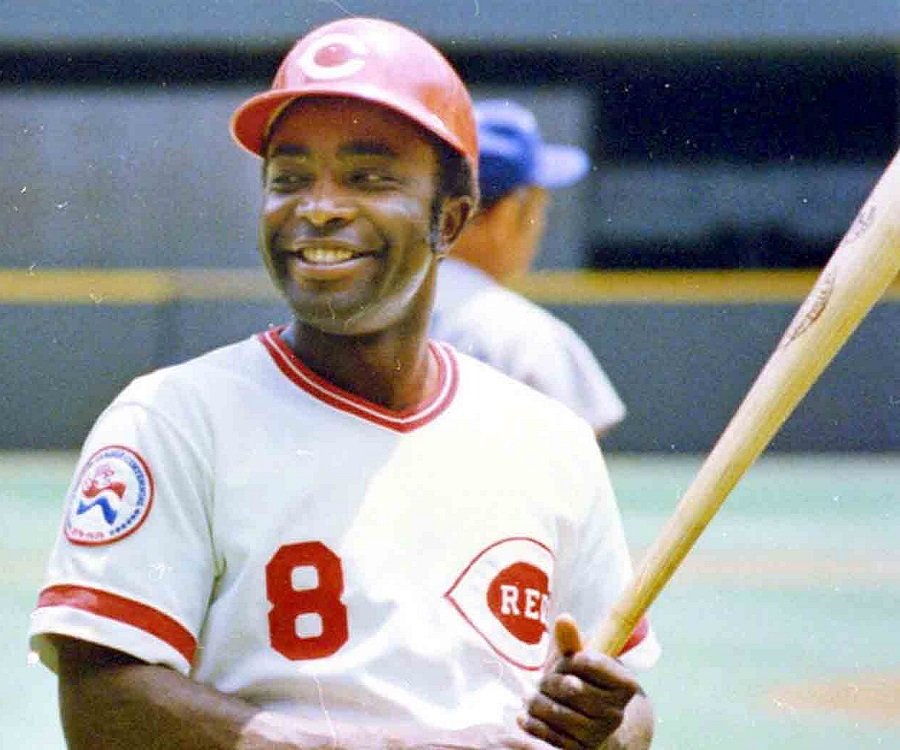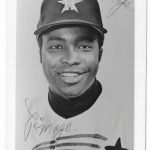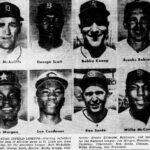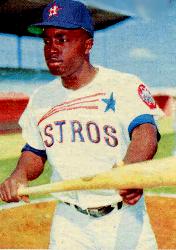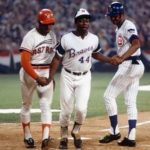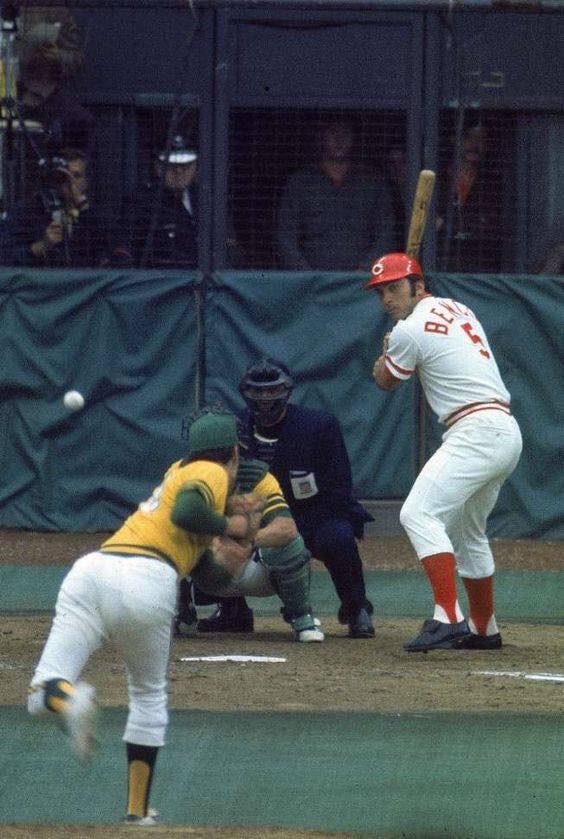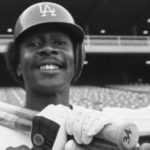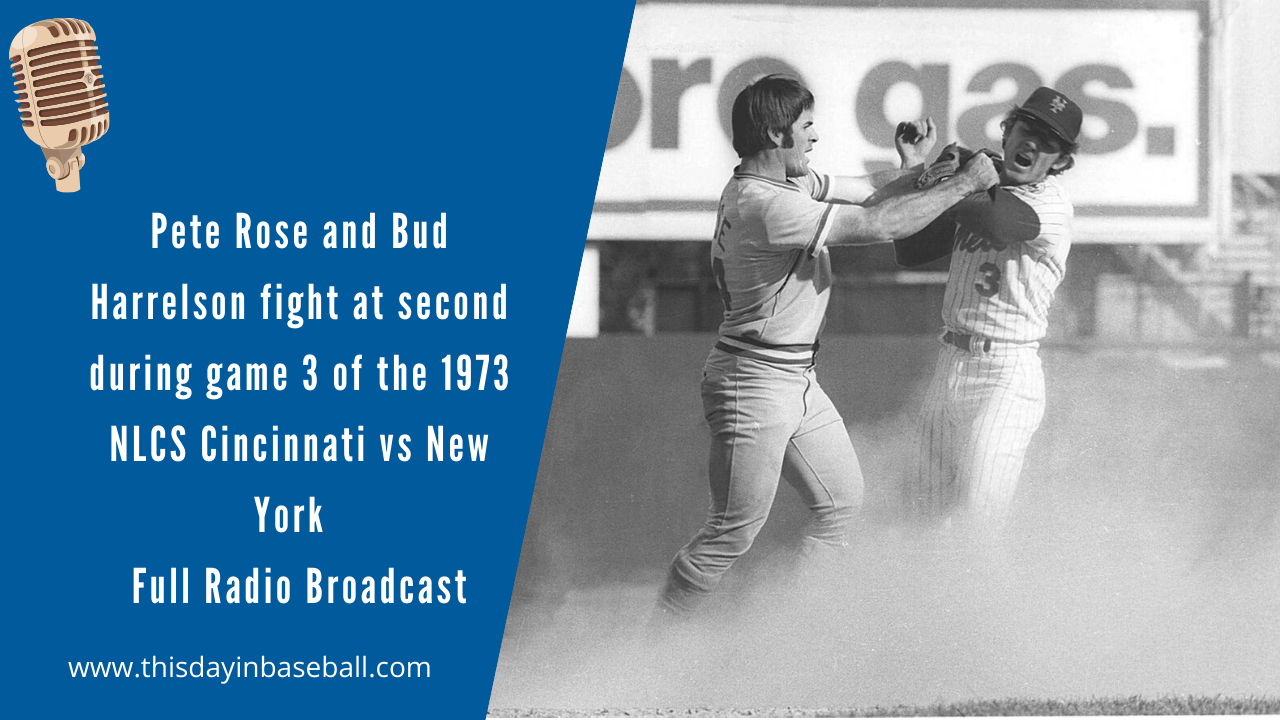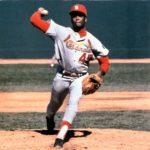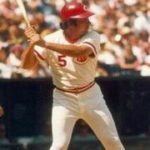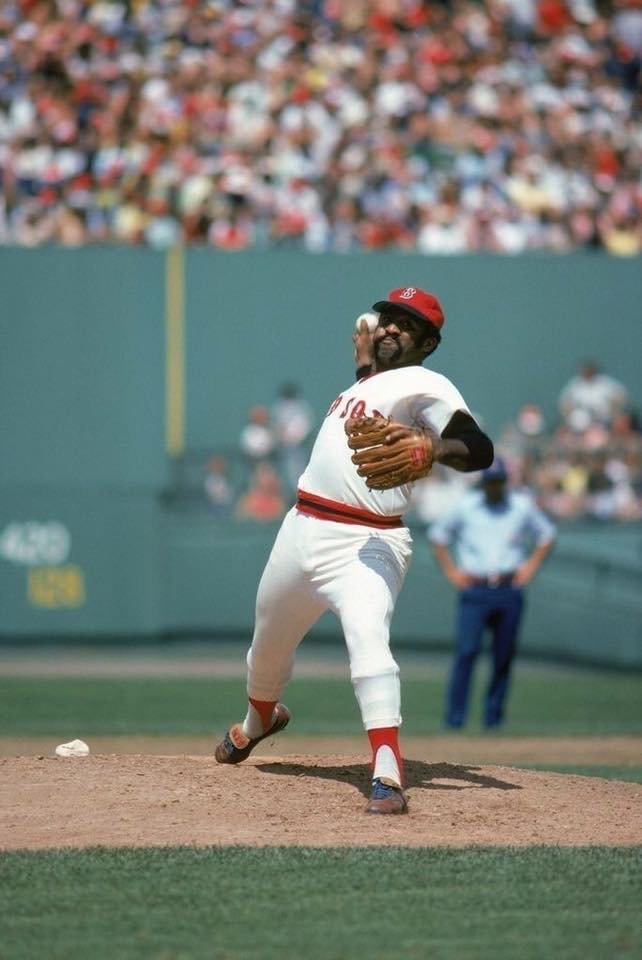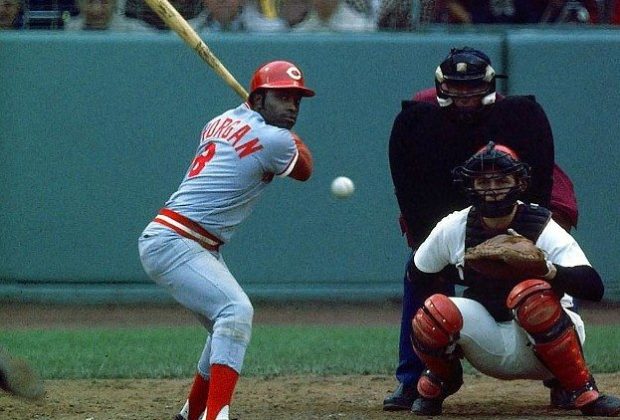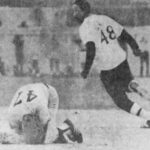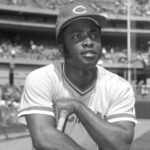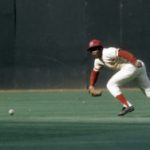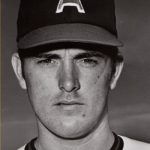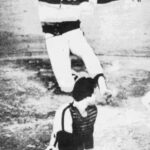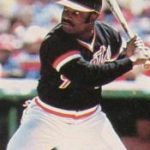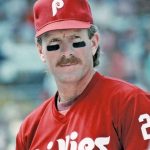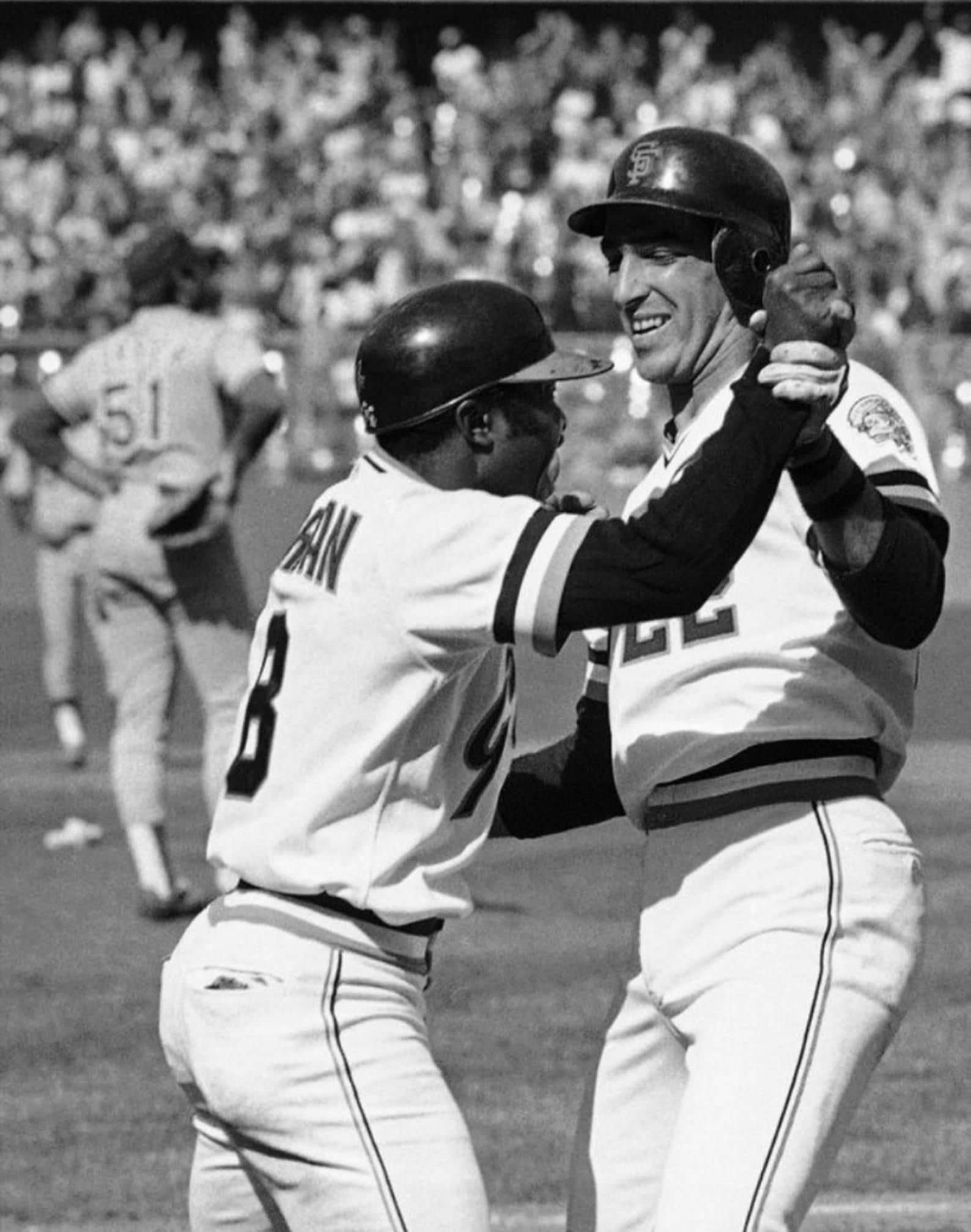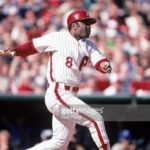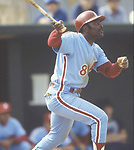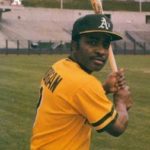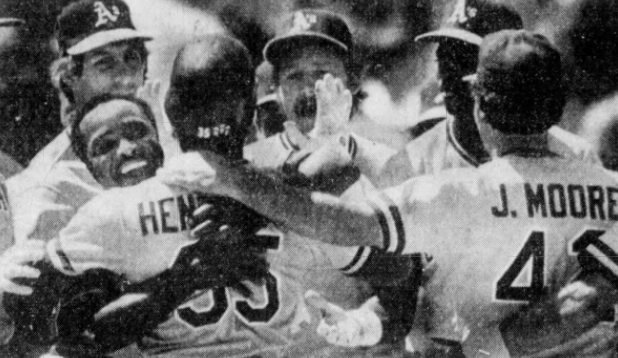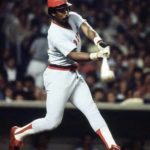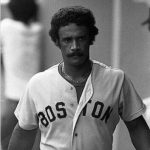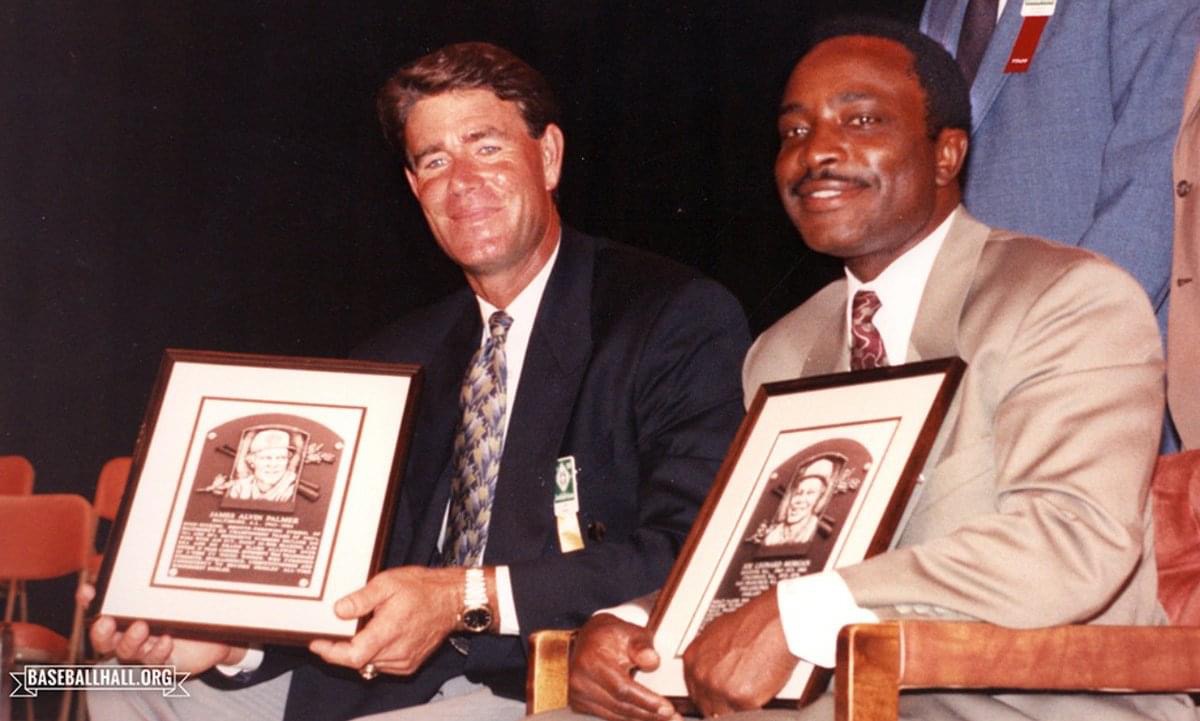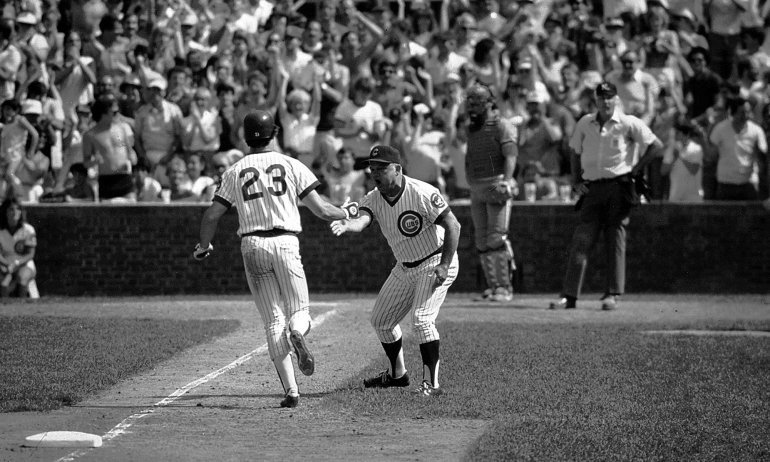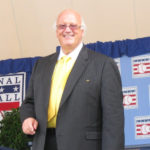Joe Morgan Stats & Facts
Joe Morgan
Position: Second Baseman
Bats: Left • Throws: Right
5-7, 160lb (170cm, 72kg)
Born: September 19, 1943 in Bonham, TX
Died: October 11, 2020 in Danville, CA
High School: Castlemont HS (Oakland, CA)
Schools: California State University, East Bay (Hayward, CA), Merritt College (Oakland, CA)
Debut: September 21, 1963 (12,180th in major league history)
vs. PHI 1 AB, 0 H, 0 HR, 0 RBI, 0 SB
Last Game: September 30, 1984
vs. KCR 1 AB, 1 H, 0 HR, 0 RBI, 0 SB
Hall of Fame: Inducted as Player in 1990. (Voted by BBWAA on 363/444 ballots)
View Joe Morgan’s Page at the Baseball Hall of Fame (plaque, photos, videos).
Agents: Tom Reich
Full Name: Joe Leonard Morgan
Nicknames: Little Joe or The Little General
View Player Info from the B-R Bullpen
View Player Bio from the SABR BioProject
Nine Players Who Debuted in 1963
Pete Rose
Rusty Staub
Joe Morgan
Willie Horton
Jose Cardenal
Jim Wynn
Dick Allen
Tommy John
Mickey Lolich
Joe Morgan All-Time Teammate Team
C: Johnny Bench
1B: Tony Perez
2B: Pete Rose
3B: Mike Schmidt
SS: Davey Concepcion
LF: Rickey Henderson
CF: Cesar Geronimo
RF: George Foster
DH: Dave Kingman
SP: Don Gullett
SP: Tom Seaver
SP: Nolan Ryan
SP: Steve Carlton
SP: J.R. Richard
RP: Clay Carroll
RP: Tug McGraw
M: Sparky Anderson
Notable Events and Chronology
The offensive catalyst of the great Cincinnati Reds teams of the 1970s, Joe Morgan was one of the finest all-around players of his generation. The diminutive second baseman possessed a keen batting eye and surprising power for a man his size, and also was an outstanding fielder and an exceptional baserunner. Morgan’s rare combination of skills enabled him to capture consecutive MVP trophies during the mid-1970s, and earned him general recognition as one of the greatest second sackers in baseball history.
Born in Bonham, Texas on September 19, 1943, Joe Leonard Morgan was raised in Oakland, California after his family moved to that city when he was still just a young boy. After attending Castlemont High School in Oakland, Morgan signed an amateur free agent contract with the expansion Houston Colt .45’s of the National League in 1962. He made his major league debut with the team a little over a year later, just two days after celebrating his 20th birthday. Morgan appeared in only eight games with Houston, accumulating six hits in 25 official at-bats, for a .240 batting average. The lefthanded-hitting second baseman made another brief appearance with the team the following season, struggling terribly at the plate by posting a .189 batting average in 37 official plate appearances. Veteran second baseman Nellie Fox, who was nearing the end of his career with Houston at the time, observed the manner in which Morgan appeared to be out of sync in the batter’s box. Noting that his intended successor tended to keep his back elbow too low, Fox suggested to Morgan that he flap his back arm like a chicken to keep his elbow up while he was at the plate. The youngster took his advice, employing that particular technique the remainder of his career.
Morgan became Houston’s starting second baseman in 1965, and he remained in that role long after the Colt .45’s moved into the Astrodome and changed their name to the Astros. Implementing his new batting style, Morgan batted .271 in his first full season. He also hit 14 home runs, scored 100 runs, and led the National League with 97 bases on balls. The second sacker also performed quite well in each of the next two seasons, compiling batting averages of .285 and .275, and finishing among the league leaders in walks and on-base percentage both years.
After missing virtually all of the 1968 season with an injury, Morgan took a step backwards when he returned to the team the following year. Although the second baseman hit 15 home runs, scored 94 runs, stole 49 bases, and walked 110 times, he batted only .236 and saw his strikeout total increase from 51 to 74. Morgan was more effective in 1970, though, raising his batting average more than 30 points to .268, finishing among the league leaders with 102 runs scored, 102 walks, and 42 stolen bases, and making the National League All-Star Team for the first time. Morgan had another solid season in 1971, but he was subsequently traded to Cincinnati at the end of the year in a blockbuster deal that also sent centerfielder Cesar Geronimo and third baseman Denis Menke to the Reds. Houston, in turn, received slugging first baseman Lee May and All-Star second sacker Tommy Helms.
On the surface, it was difficult to determine at the time which team benefited more from the transaction. The Astros acquired one of the National League’s top sluggers in May, and they also got a very solid second baseman in Helms. But the deal turned out to be a steal for Cincinnati. After capturing the pennant in 1970, the Reds finished well out of contention in the N.L. West the following year. The team’s offense was predicated largely on the slugging abilities of players such as May, Johnny Bench, and Tony Perez. However, Cincinnati management felt a need to complement its long ball threats with a smart and aggressive baserunner such as Morgan. The acquisition of the second baseman turned out to be one of the shrewdest moves the organization ever made. Not only did Morgan provide the team with exceptional offense and baserunning at the top of its lineup, but he gave the Reds leadership in the infield and outstanding defense up the middle. Furthermore, Geronimo gave them a very solid defensive centerfielder, and Menke enabled them to shift third baseman Perez back to his more natural position of first base. With all the pieces in place, Cincinnati became the National League’s dominant team for the next several seasons.
Despite the presence of several other All-Star players in the Reds’ lineup, Morgan was arguably the key to The Big Red Machine. Shortly after he joined Cincinnati prior to the start of the 1972 campaign, Reds manager Sparky Anderson recognized the many unique talents his new second baseman possessed. Morgan was not only a fine fielder and an exceptional baserunner, but he was also an extremely patient hitter and a very intelligent and instinctive player. Anderson turned loose the reigns on Morgan, giving him total freedom both at the plate and on the basepaths. Before long, the 5’7″, 165-pound second baseman realized he also had untapped power at the plate, and he became one of the team’s better RBI-men. Developing into one of baseball’s finest all-around players, Morgan led the Reds to four division titles, three pennants, and two world championships between 1972 and 1977.
Morgan had his first truly great season in 1972, batting .292, stealing 58 bases, and leading the league with 122 runs scored, 115 bases on balls, and a .419 on-base percentage. He followed that up by batting .290 and scoring 116 runs in 1973, while also establishing new career highs with 26 home runs, 82 runs batted in, and 67 stolen bases.
After another solid 1974 campaign, Morgan captured league MVP honors in both 1975 and 1976, leading the Reds to the world championship both years. In the first of those seasons, Morgan finished in the league’s top five in five different offensive categories, while capturing the third of his five consecutive Gold Gloves. In addition to hitting 17 home runs and driving in 94 runs, he batted .327, scored 107 runs, stole 67 bases, and led the league with 132 walks and a .471 on-base percentage. Morgan was even better in 1976, establishing career highs with 27 homers and 111 RBIs, batting .320, scoring 113 runs, stealing 60 bases, walking 114 times, and leading the league with a .453 on-base percentage and a .576 slugging percentage. The second baseman had his last big year in 1977, hitting 22 home runs, knocking in 78 runs, batting .288, and finishing among the league leaders with 113 runs scored, 49 stolen bases, 117 walks, and a .420 on-base percentage.
By the time the dust had settled, Morgan finished among the league leaders in runs scored, stolen bases, walks, and on-base percentage each season from 1972 to 1977, topping the circuit in the last category on four separate occasions. He also placed near the top of the league rankings in batting average twice, and, in addition to winning the MVP Award in 1975 and 1976, he finished in the top five in the voting in both 1972 and 1973.
Morgan’s offensive productivity began to decline in 1978, and he spent two more years in Cincinnati before rejoining the Astros in 1980. He helped Houston to the Western Division title that year, then split his final four seasons between San Francisco, Philadelphia, and Oakland, before deciding to call it quits at the conclusion of the 1984 campaign. Morgan ended his career with 268 home runs, 1,133 runs batted in, 1,650 runs scored, 2,517 hits, 689 stolen bases, a .271 batting average, and a superb .395 on-base percentage. Morgan’s 1,650 runs scored are the third most ever tallied by a second baseman. He scored more than 100 runs and compiled more than 100 walks in a season eight times each, and he stole more than 40 bases on nine separate occasions. In addition to winning two Most Valuable Player Awards and five Gold Gloves, Morgan was named to 10 All-Star teams.
Following his retirement, Morgan entered into a career as a baseball analyst. He continues to serve as a radio and television color commentator on national broadcasts, where he candidly voices his opinion. A longtime critic of the sabermetrical approach to baseball, Morgan has often expressed the belief that statistics are not more helpful than observation when analyzing players. Ironically, Morgan’s stance has caused him to refute the opinion expressed by noted sabermetrican Bill James in the New Bill James Historical Baseball Abstract that Morgan was the best second baseman in baseball history. Morgan considered the notion ridiculous, arguing that Roger Hornsby batted .358 over the course of his career, while he never came close to batting that high even once in his 22 seasons.
@ET-DC@eyJkeW5hbWljIjp0cnVlLCJjb250ZW50IjoicG9zdF90YWdzIiwic2V0dGluZ3MiOnsiYmVmb3JlIjoiTGVhcm4gTW9yZSBhYm91dCB0aGUgdGVhbXMsIHBsYXllcnMsIGJhbGwgcGFya3MgYW5kIGV2ZW50cyB0aGF0IGhhcHBlbmVkIG9uIHRoaXMgZGF0ZSBpbiBoaXN0b3J5IC0gLSAtIC0gLSAtIC0gIiwiYWZ0ZXIiOiIiLCJsaW5rX3RvX3Rlcm1fcGFnZSI6Im9uIiwic2VwYXJhdG9yIjoiIHwgIiwiY2F0ZWdvcnlfdHlwZSI6InBvc3RfdGFnIn19@
Factoids, Quotes, Milestones and Odd Facts
The greatest second baseman of his generation and, at his peak, the best player in baseball, Joe Morgan helped spark the top of the lineup for The Big Red Machine and won two MVP awards. He helped lead three different franchises to the post-season, and his dramatic home run eliminated the Dodgers from the 1982 playoff race on the season’s final day. After his playing career, he was elected to the Hall of Fame in 1990 and became a successful baseball broadcaster.
Played For
Houston Astros (1963-1971)
Cincinnati Reds (1972-1979)
Houston Astros (1980)
San Francisco Giants (1981-1982)
Philadelphia Phillies (1983)
Oakland Athletics (1984)
Morgan refused to be considered for several managing jobs after his playing days were over, choosing instead to analyze the game from the broadcast booth.
Similar: Lou Whitaker is the closest statistically, but he wasn’t nearly as good as Morgan. Whitaker wasn’t as good a base stealer and wasn’t nearly as good a hitter, though Sweet Lou was good. They shared good patience at the plate and power. Whitaker had a better fielding arm by far, and he had a little better range.
Linked: Johnny Bench, Pete Rose, Tony Perez, Davey Concepcion, Tommy Helms, Rogers Hornsby, Lou Whitaker, Ryne Sandberg, Barry Bonds
Best Season, 1976
One of the finest all-around seasons ever by a second baseman. He led the NL in slugging (.576) and OBP (.453), while batting .320 and stealing 60 bases. He scored 113 runs, walked 114 times, drove in 111, clubbed 27 homers, and won the Gold Glove. He won his second straight MVP award.
Awards and Honors
1972 ML AS MVP
1973 NL Gold Glove
1974 NL Gold Glove
1975 NL Gold Glove
1975 NL MVP
1976 NL Gold Glove
1976 NL MVP
1977 NL Gold Glove
Post-Season Appearances
1972 National League Championship Series
1972 World Series
1973 National League Championship Series
1975 National League Championship Series
1975 World Series
1976 National League Championship Series
1976 World Series
1979 National League Championship Series
1980 National League Championship Series
1983 National League Championship Series
1983 World Series
Where He Played: Second base
Transactions
November 1, 1962: Signed by the Houston Colt .45’s as an amateur free agent; November 29, 1971: Traded by the Houston Astros with Ed Armbrister, Jack Billingham, Cesar Geronimo, and Denis Menke to the Cincinnati Reds for Lee May, Tommy Helms, and Jimmy Stewart; November 1, 1979: Granted Free Agency; January 31, 1980: Signed as a Free Agent with the Houston Astros; December 8, 1980: Released by the Houston Astros; February 9, 1981: Signed as a Free Agent with the San Francisco Giants; December 14, 1982: Traded by the San Francisco Giants with Al Holland to the Philadelphia Phillies for Mike Krukow, Mark Davis, and Charles Penigar (minors); October 31, 1983: Released by the Philadelphia Phillies’ December 13, 1983: Signed as a Free Agent with the Oakland Athletics.
The trade that sent him to the Reds is one of the best in Cincinnati franchise history, if not the best. It not only netted Morgan, but also starting pitcher Jack Billingham, who proved to be solid for the Reds, and Cesar Geronimo, who was amazing in center field.
Data courtesy of Restrosheet.org
All-Star Selections
1966 NL
1970 NL
1972 NL
1973 NL
1974 NL
1975 NL
1976 NL
1977 NL
1978 NL
1979 NL
Replaced
Nellie Fox
Replaced By
Donnie Hill
Best Strength as a Player
Quick reflexes, which helped him at the plate and on the basepaths as a terrific base stealer. Over the course of his career, Morgan showed great success as a basestealer against both RHP and LHP. His rate against RHP was 80.6% and against lefties it was 81.9%.
Largest Weakness as a Player
His arm was never considered that strong, but it wasn’t a liability.
Other Resources & Links
Coming Soon
If you would like to add a link or add information for player pages, please contact us here.

